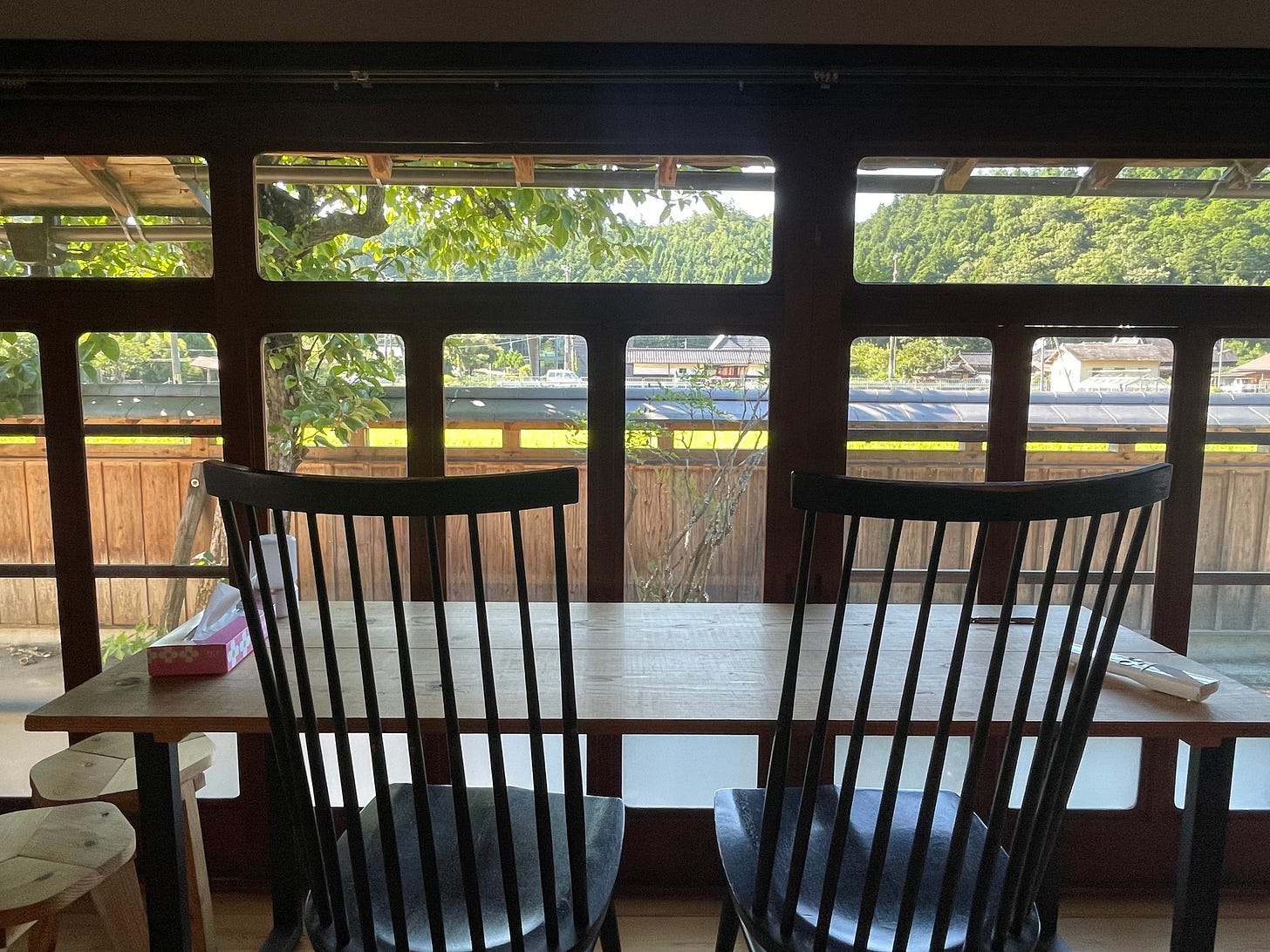Keihoku,"京北," is located in the northern part of Kyoto, approximately a 40-minute drive from Kyoto Station.
This area is historically significant as it was where Emperor Kanmu relocated Japan’s capital from Nara to Kyoto, establishing Heian-kyo. The woods used to build his new capital were sourced from this region.
The Katsura River flows directly from Keihoku to central Kyoto. Historically, trees cut down in Keihoku were transported to the heart of Kyoto via this river. In Kyoto, there is even a road named Marutamachi, which translates to "Log Town."
Keihoku is roughly the same size as Osaka Prefecture, with 93% of its land covered by forests, known for their high-quality wood.
Due to this, the architecture in the area includes a notable feature: the "茅葺き" (Kayabuki) roofs. Kayabuki roofs, made from materials such as pampas grass, reeds, and straw, are considered the most primitive roofing type. These roofs are advantageous for Japan's climatic conditions, offering coolness in summer and warmth in winter, thus complementing the country's four distinct seasons.
We were guided by Kei-san and Feilang, who is a founder of ROOTS. They offer tours, field studies, and consultation services to design local economies in various regions. Both of them reside in Keihoku, living in beautiful Kayabuki houses.
We stayed at one of their accommodations, "Roots-tehen," which is a renovated 100-year-old village headman's house.

Personally, I love staying in buildings that have their own unique stories and history. I am a huge fan of a service called "Nipponia," which designs accommodations that encourage guests to explore the cities. They feature dispersed check-in locations, restaurants, and beds, allowing guests to interact closely with the local residents.
It's impossible not to greet them, especially if you have kids—local grandparents just can't resist striking up a conversation with us!
I woke up in the morning feeling cold, surprisingly since it's the end of July—supposedly the hottest season in Japan, especially in Kyoto. Interestingly, the accommodation didn't have air conditioning.
It made me feel foolish for relying on air conditioning every night. We complain about the planet warming and summers getting hotter each year, yet we exacerbate the issue by using air conditioners daily.
During our visit to Feilang's house, she mentioned that it stays cooler inside. They turn on the heater, which uses natural heat, to prevent humidity from accumulating in the Kayabuki roof. Additionally, when the heat rises, it creates a cooling breeze that enters the house.
Such wisdom. Kei-san refers to this type of knowledge as "local wisdom." He believes this wisdom can be applied not just throughout Japan but globally, a sentiment I strongly share.
For PlanetDAO, in the case of Irokawa, they source their daily water from a natural river and all households grow pesticide-free vegetables. Whenever we're on a business trip there, we always stay at a farmhouse called "Jugemu," and each visit brings new insights. It really highlights what matters in life by completely disconnecting you from city life.
There might be some future collaboration between PlanetDAO and Roots. Stay tuned!








